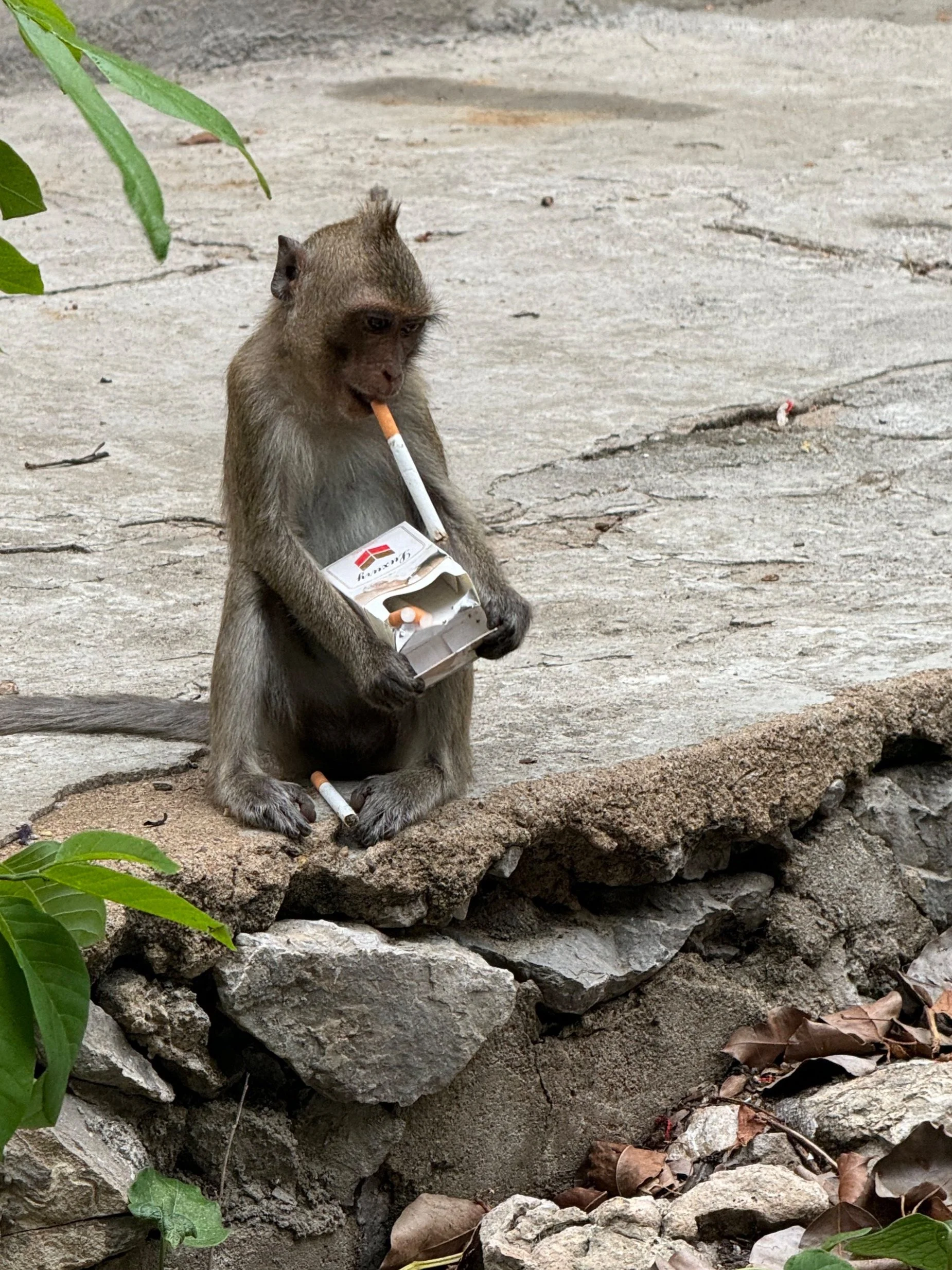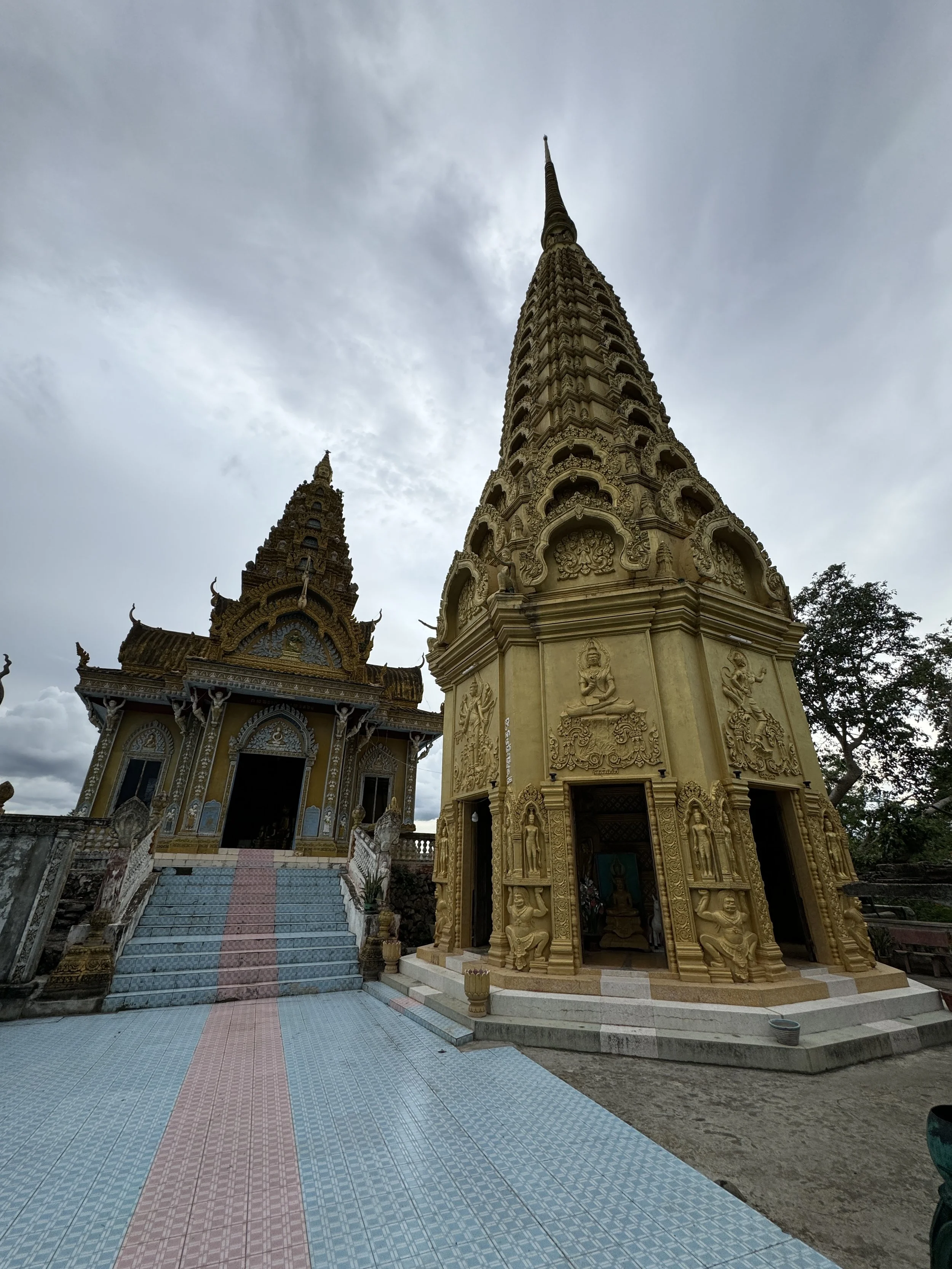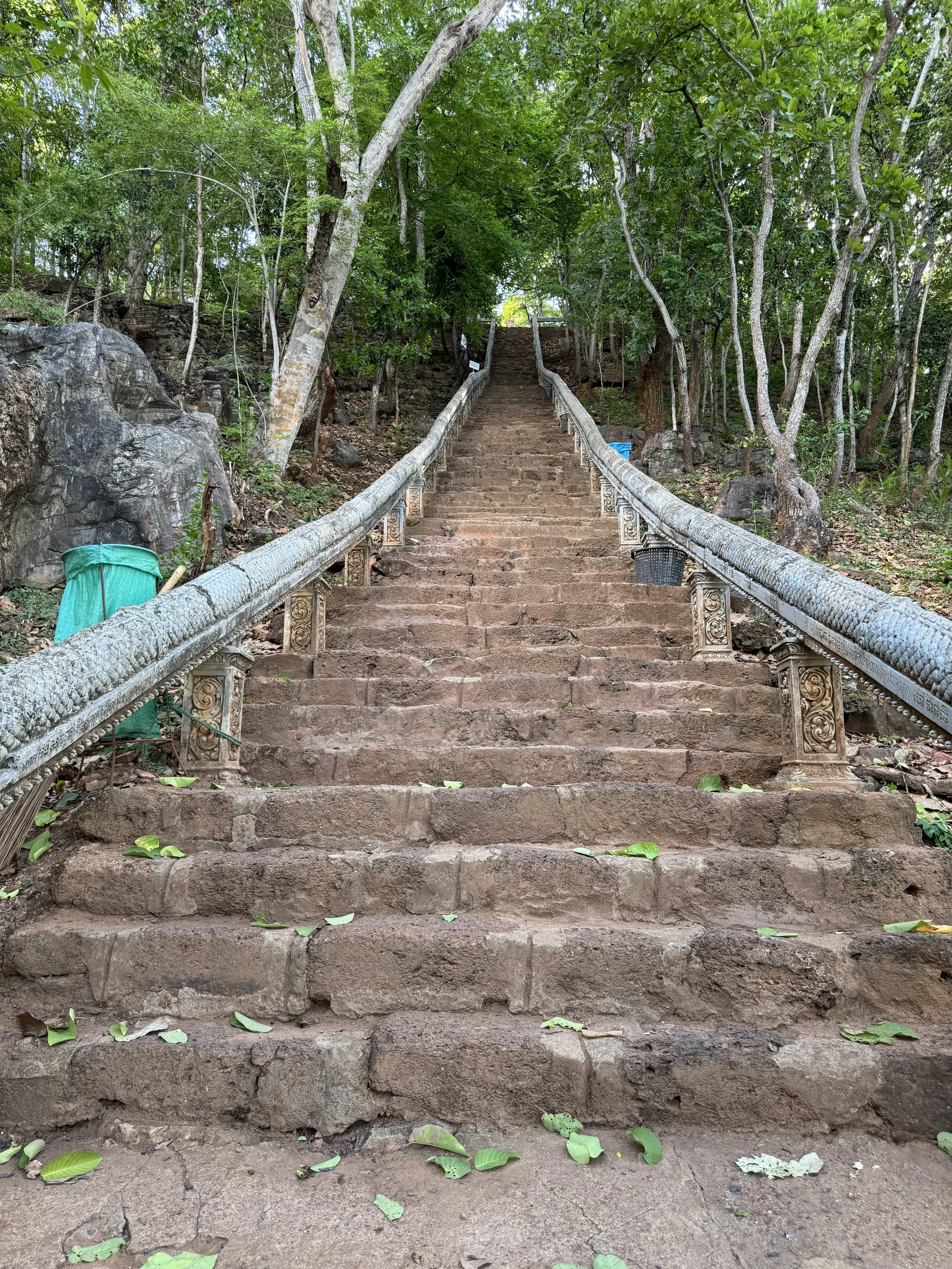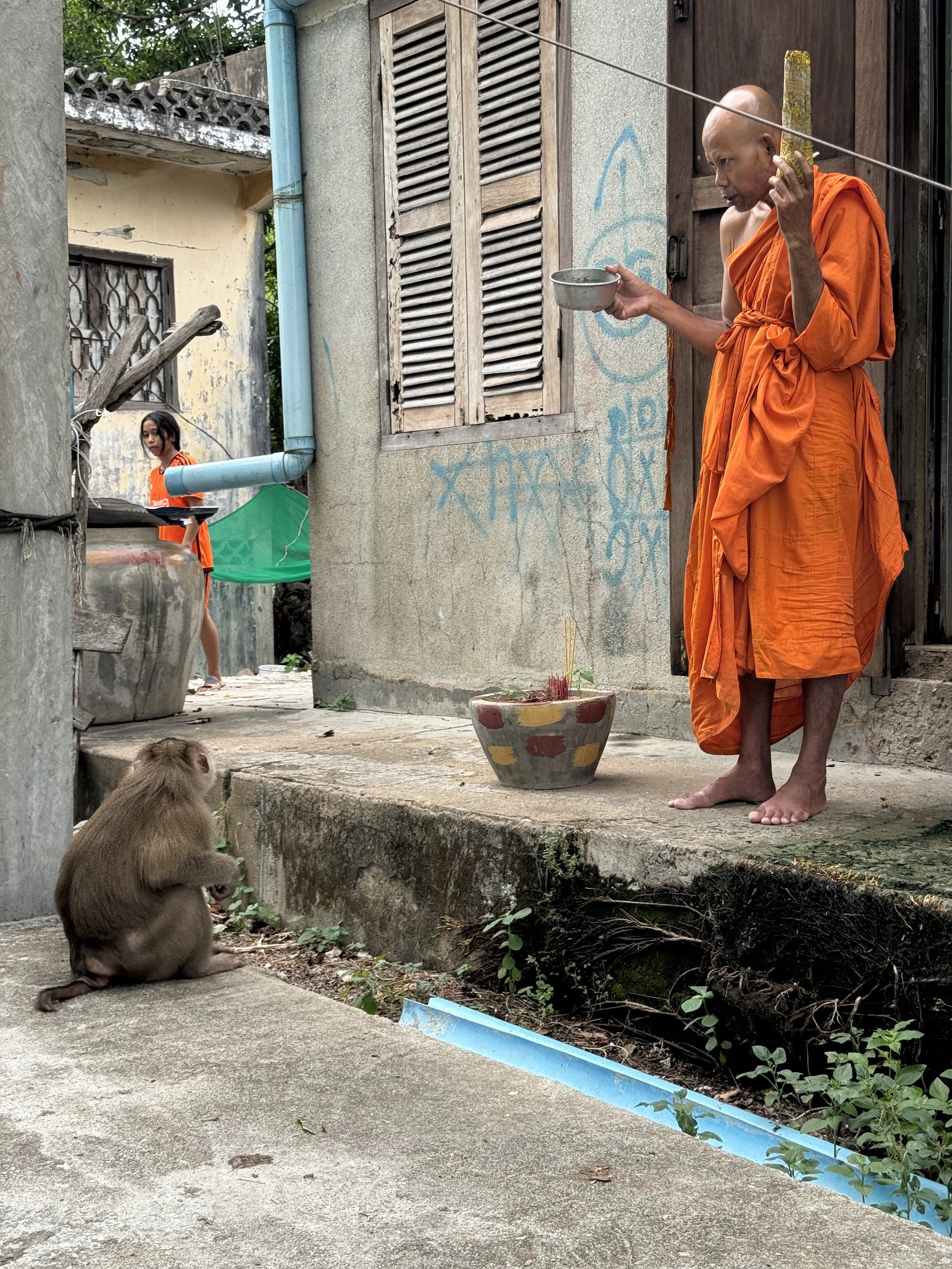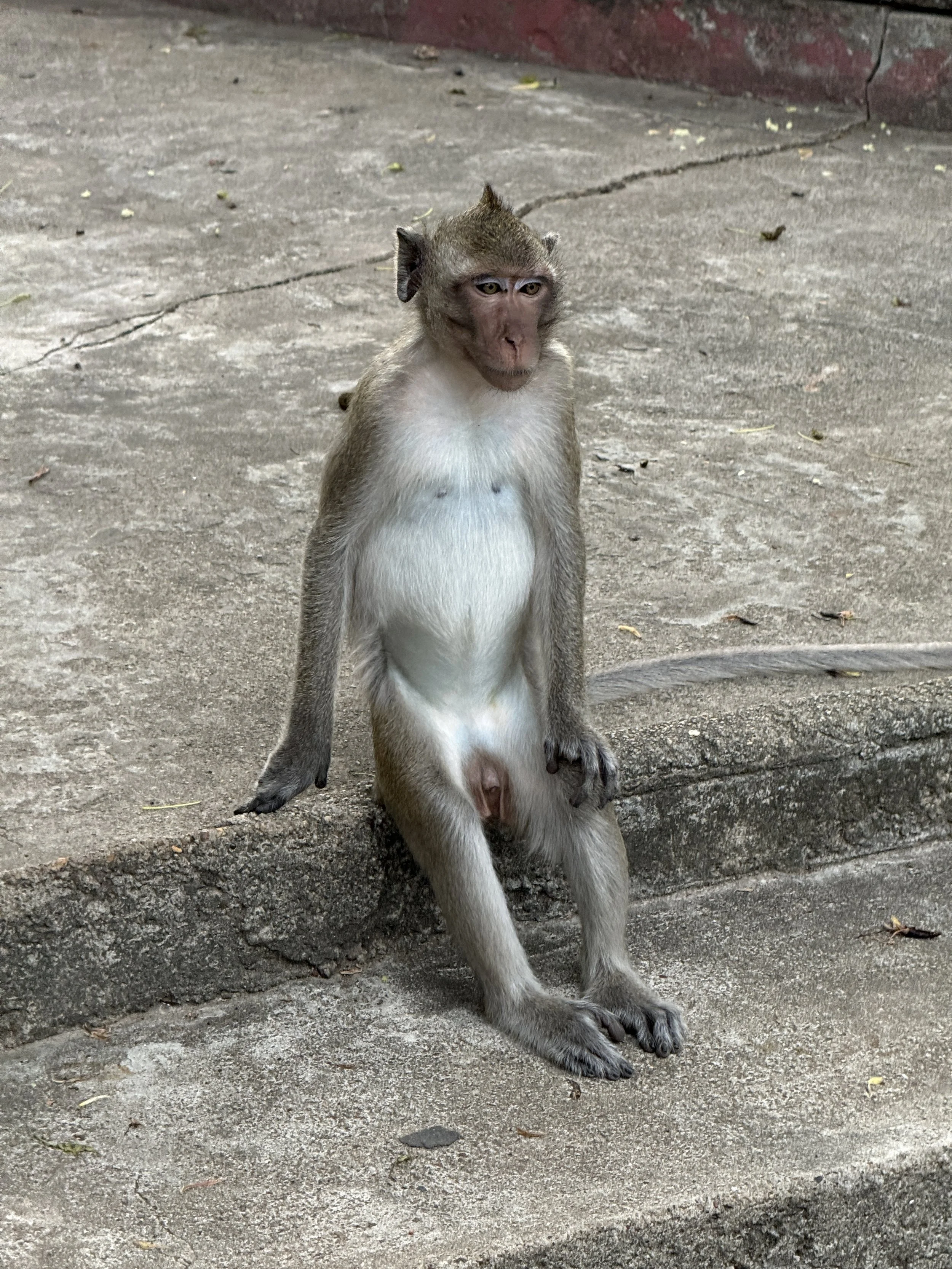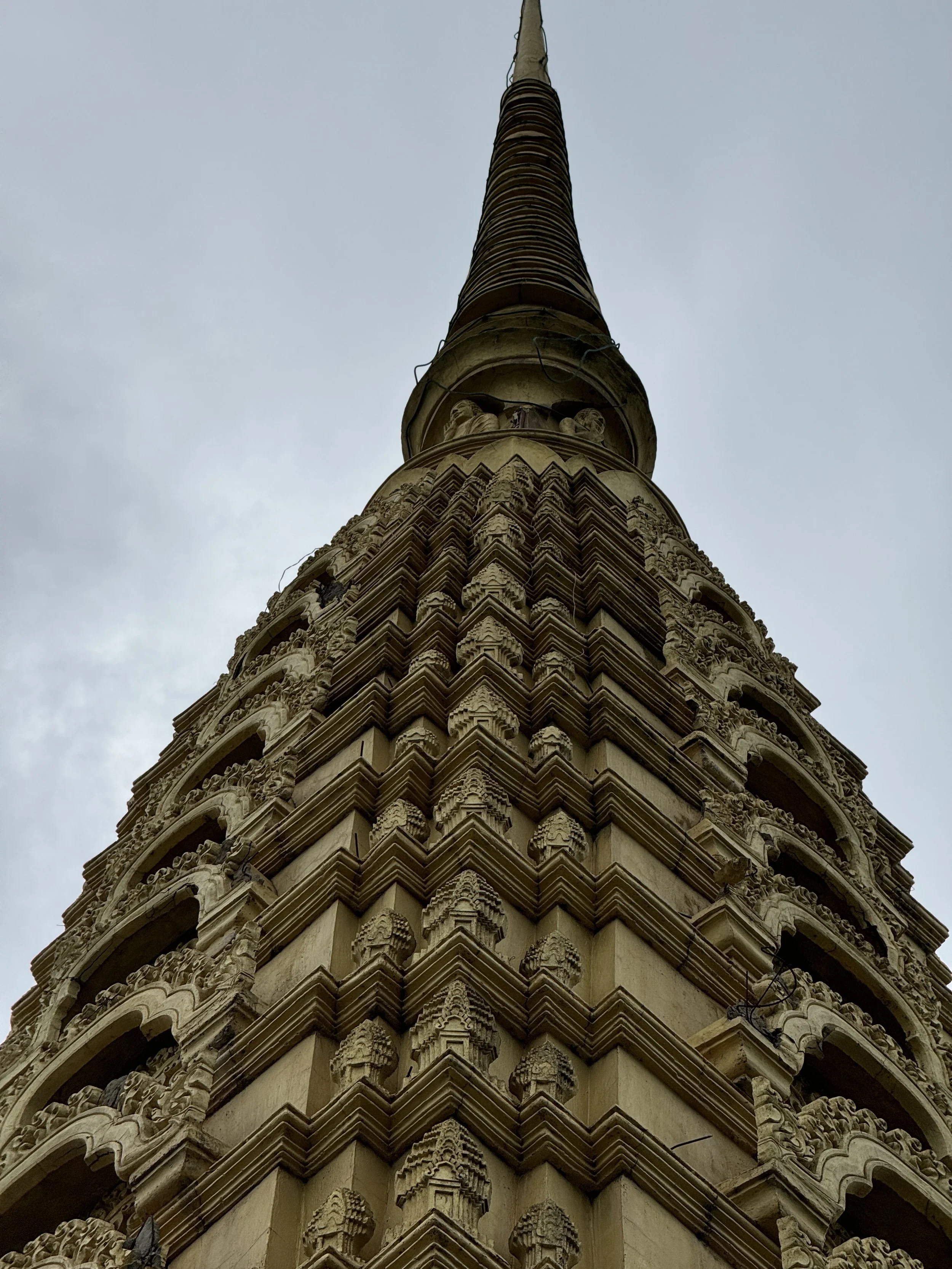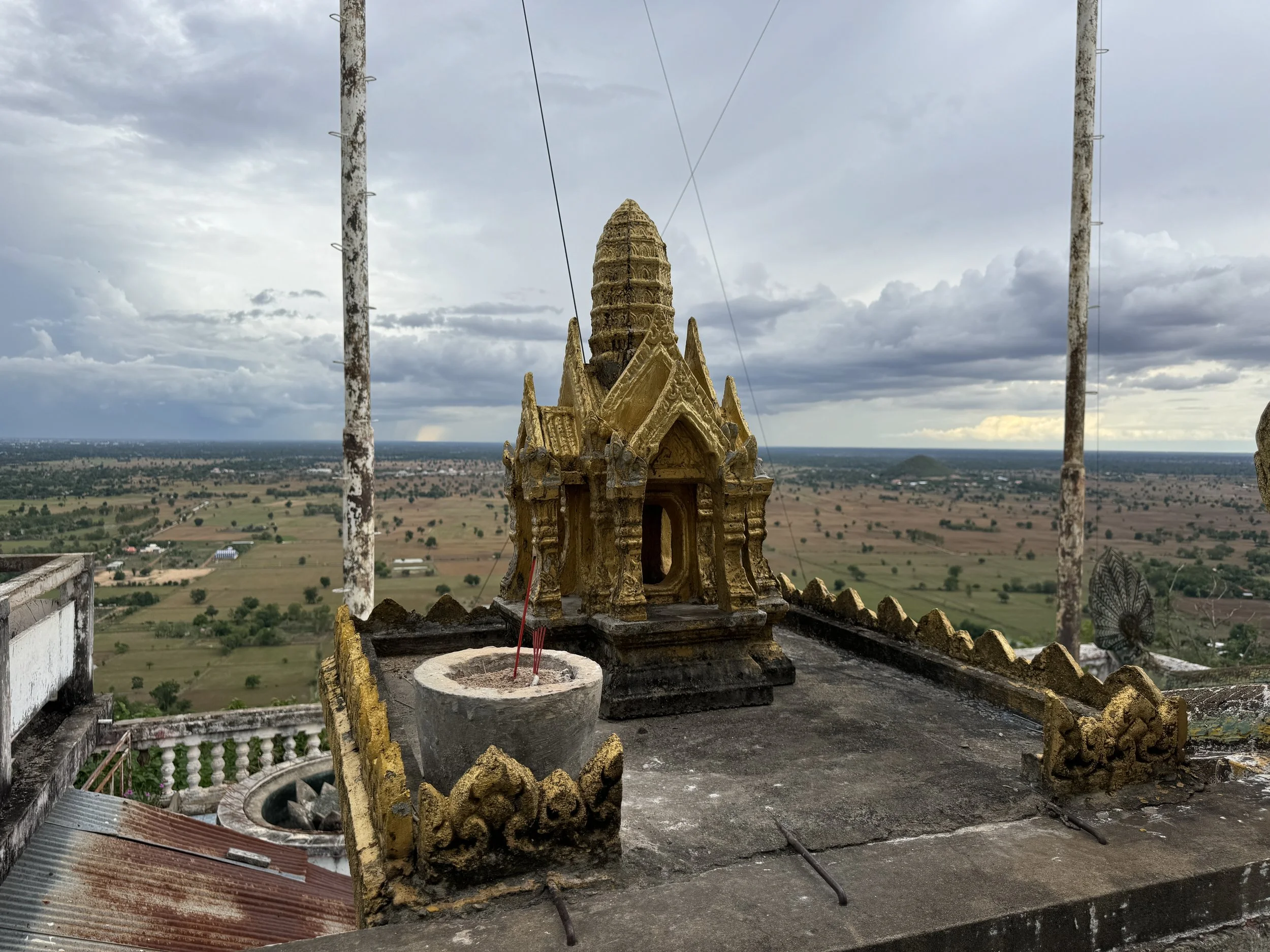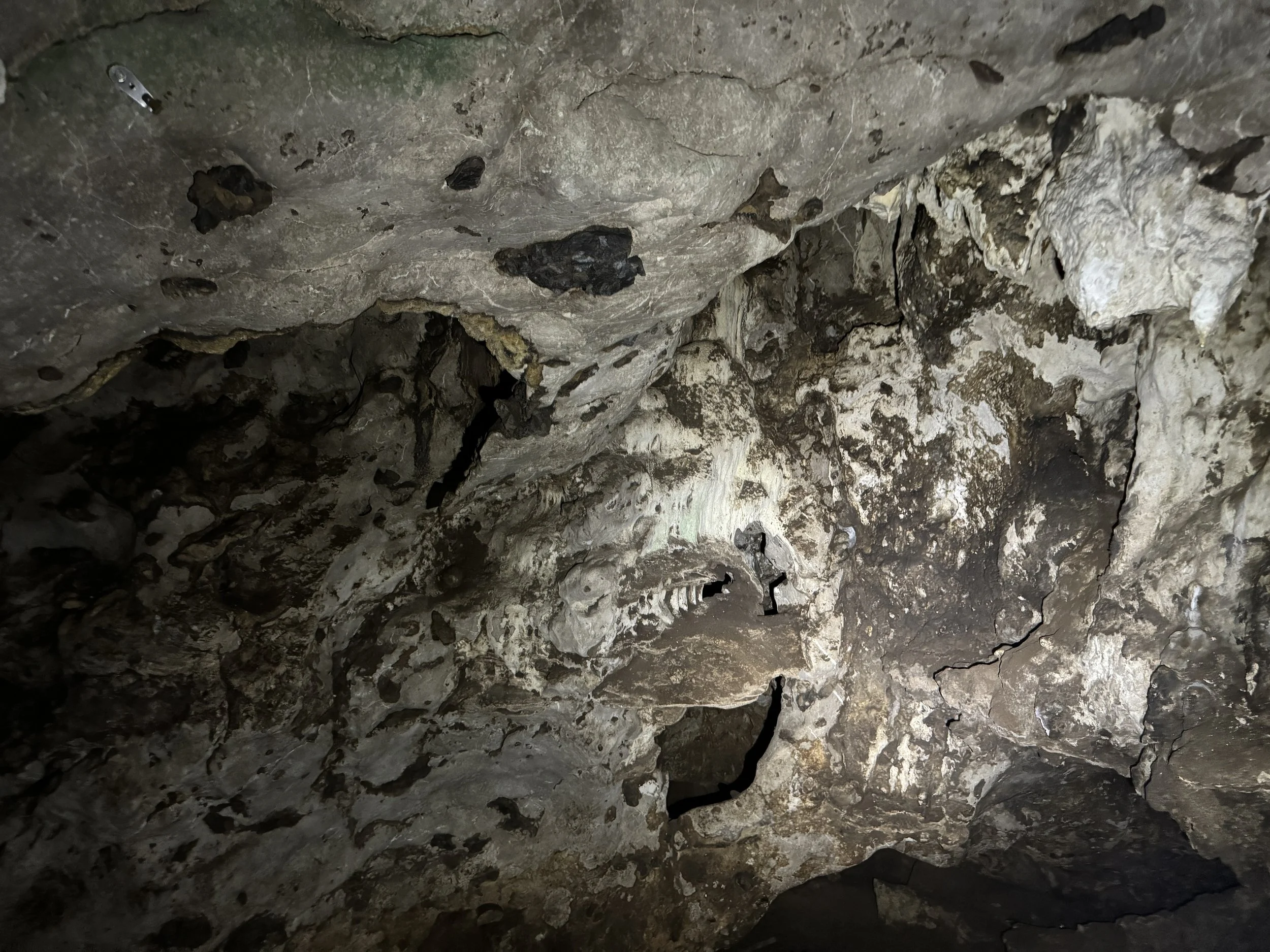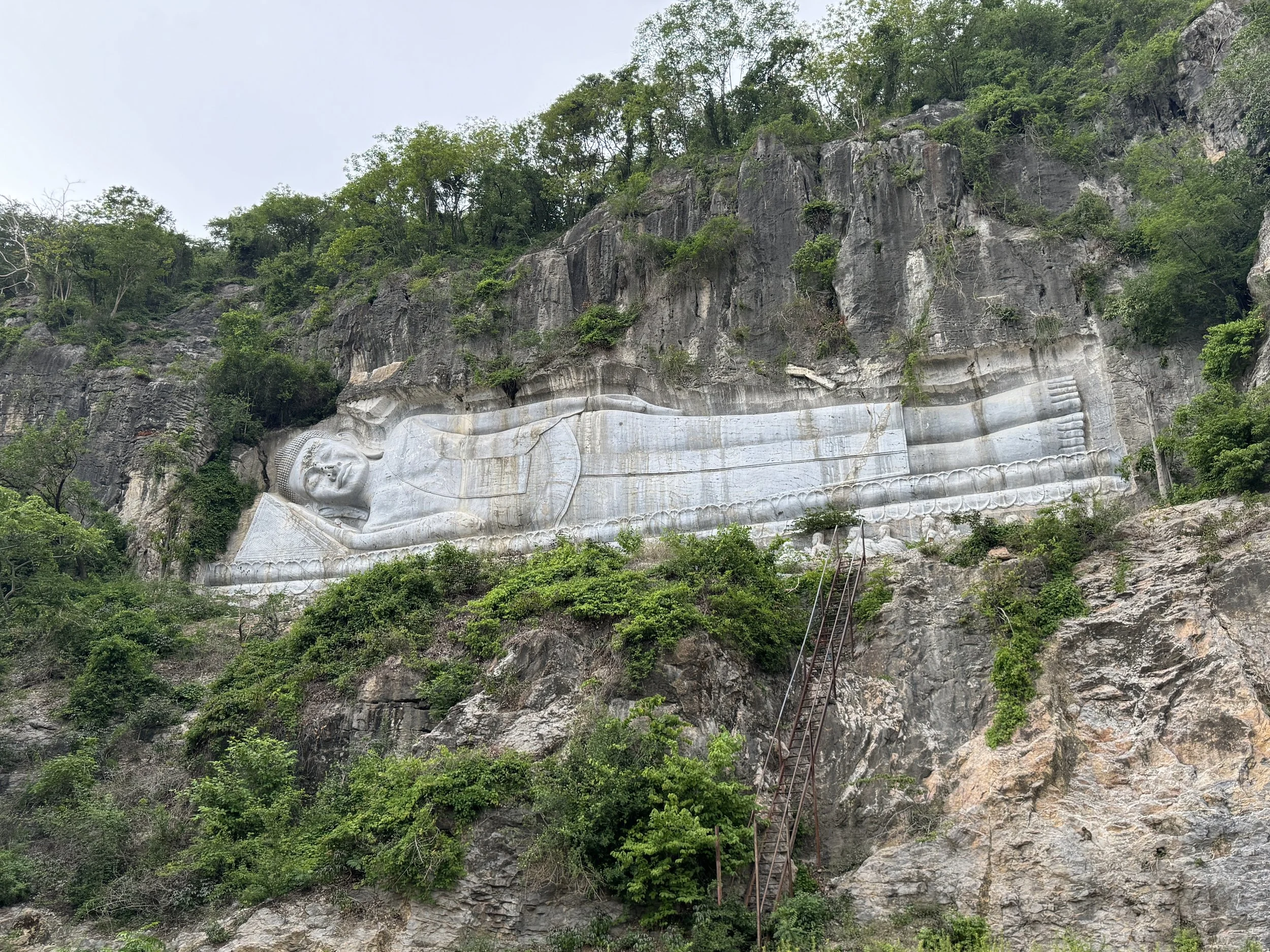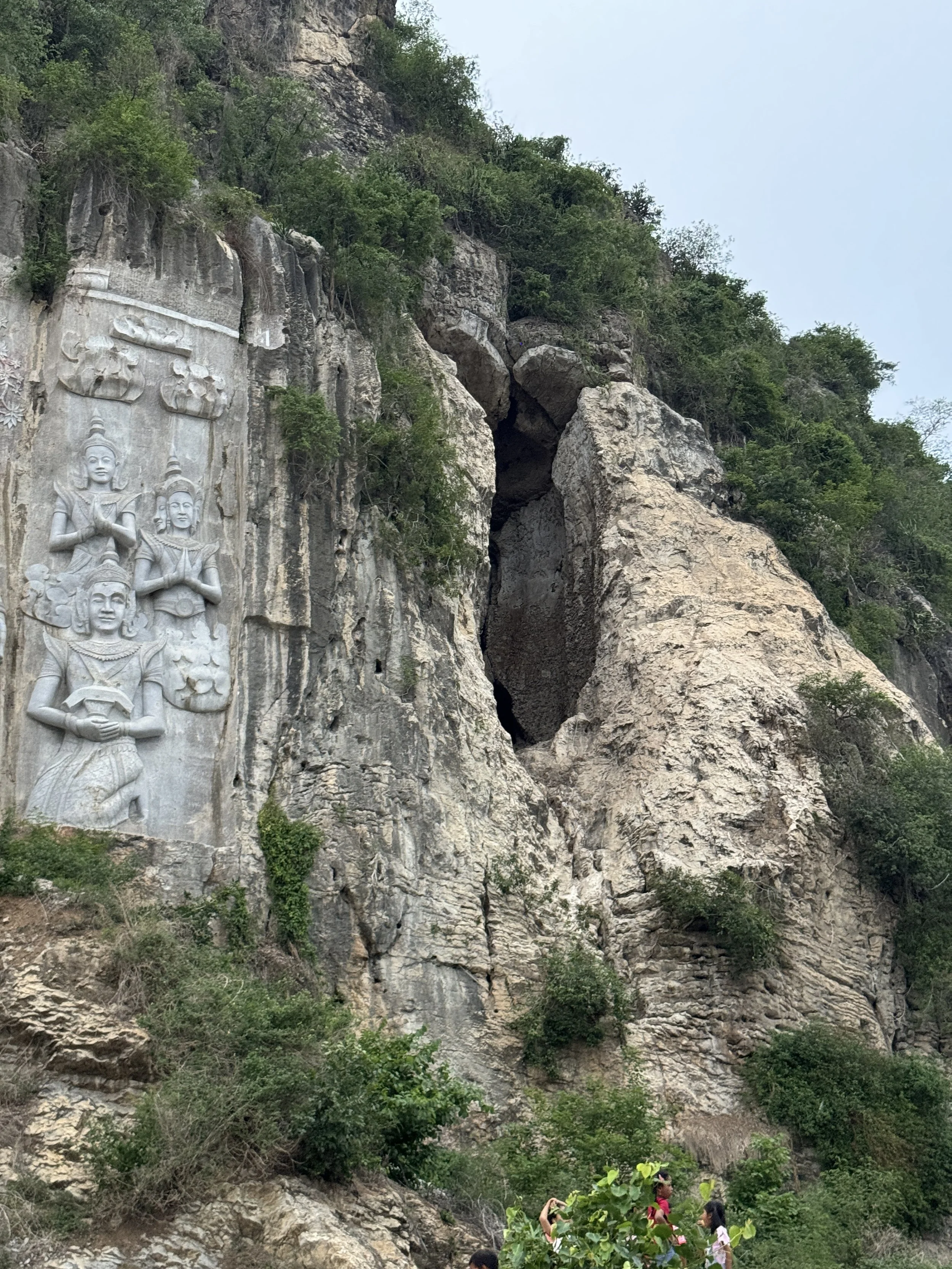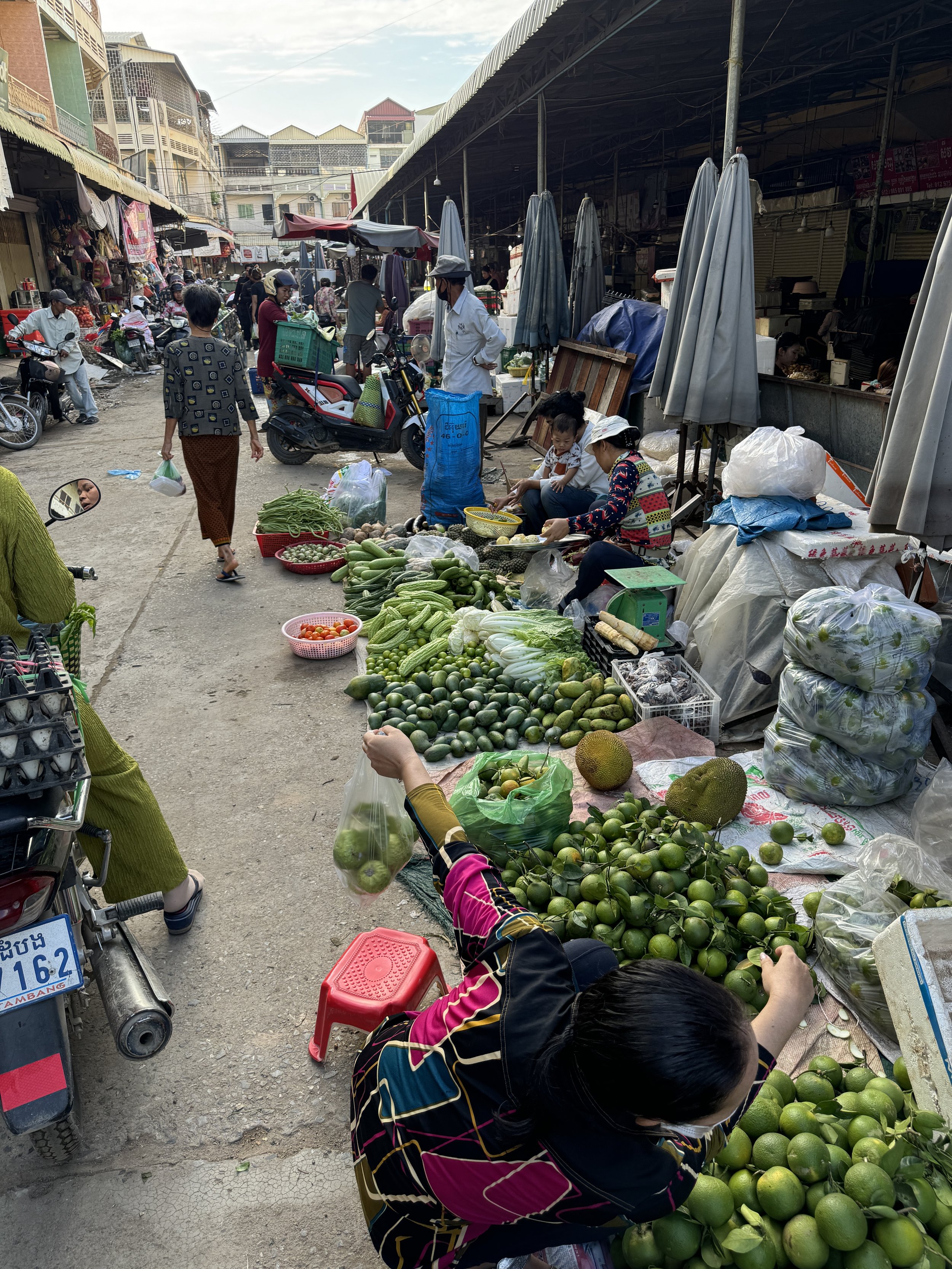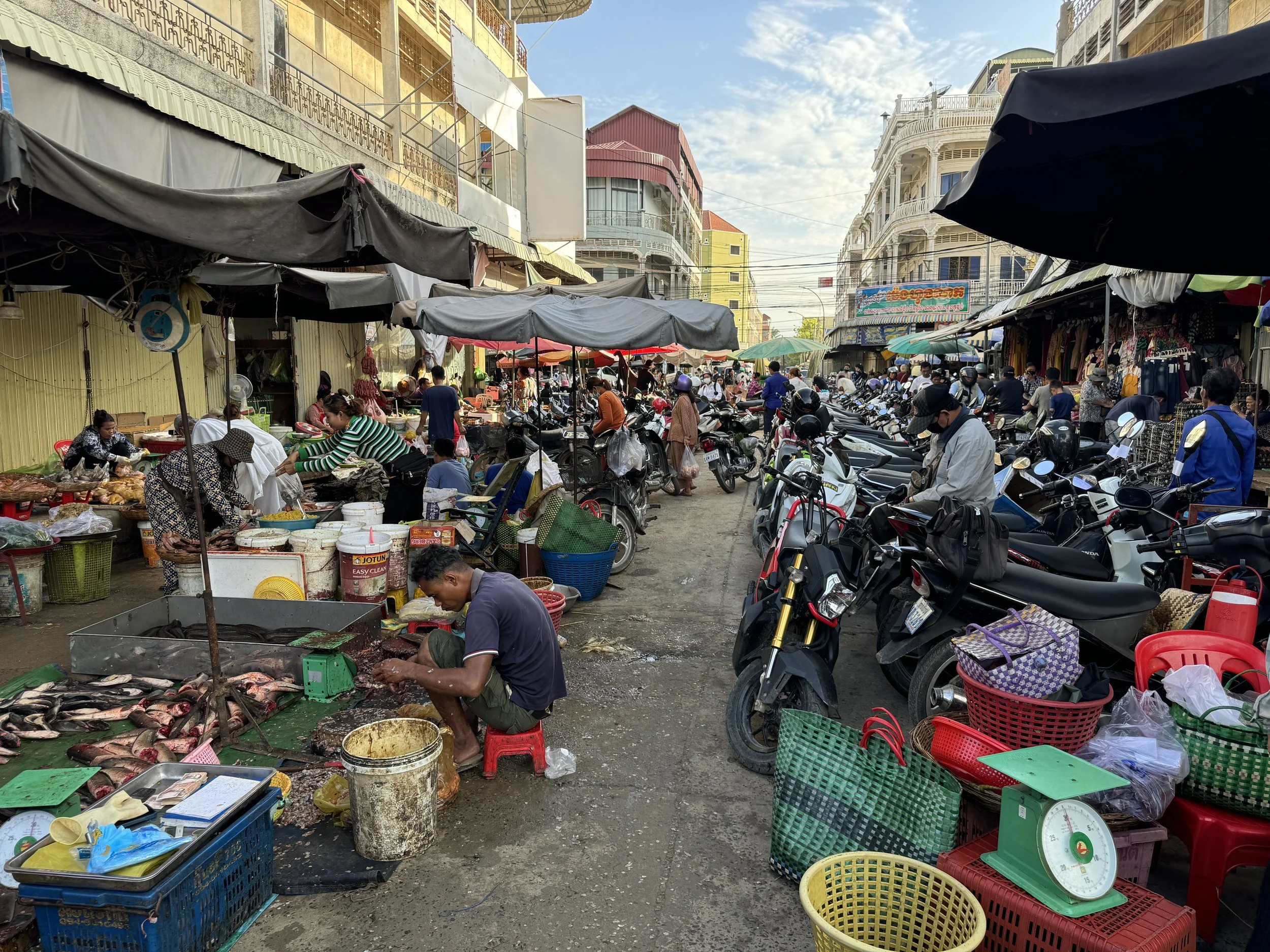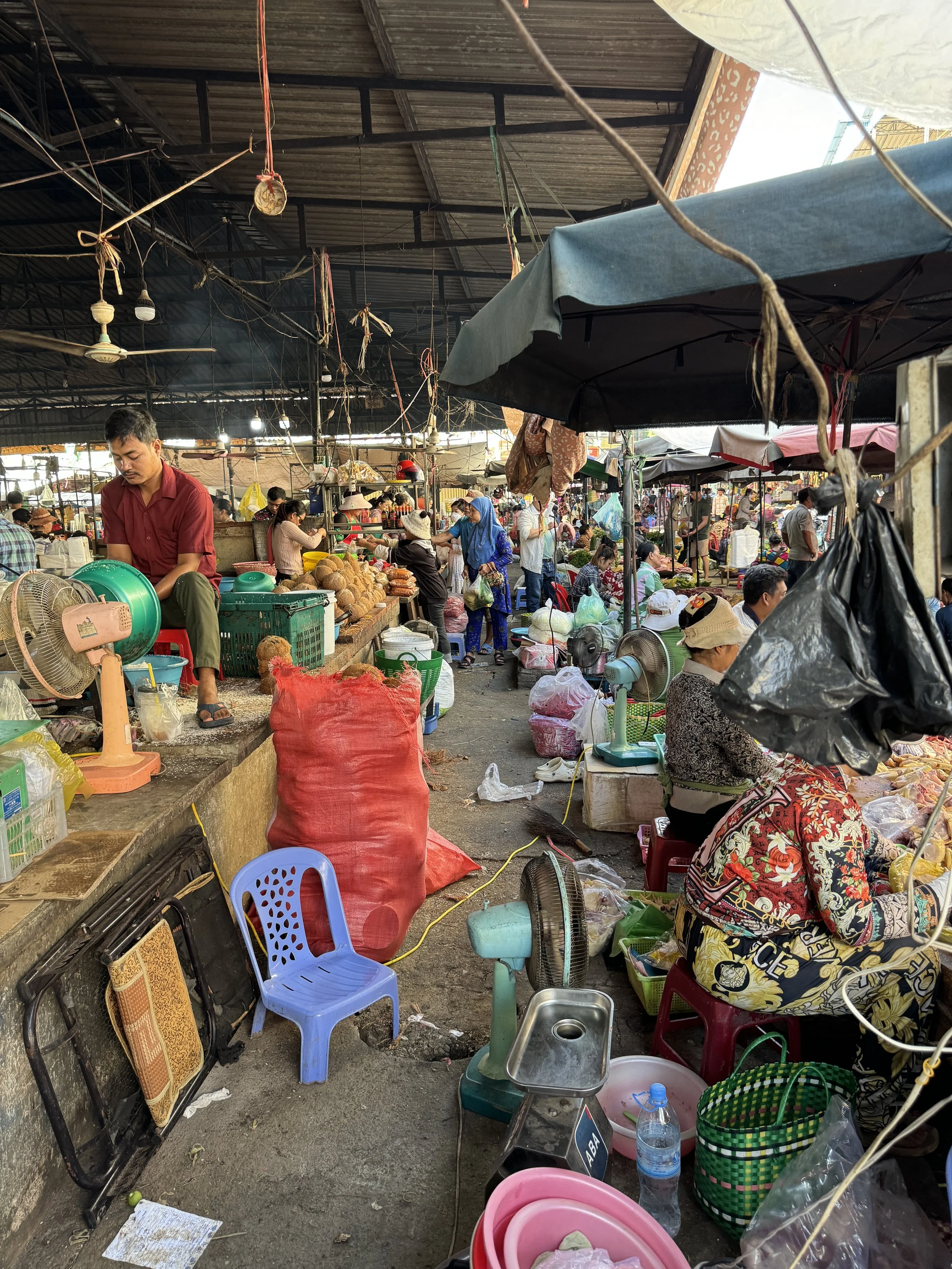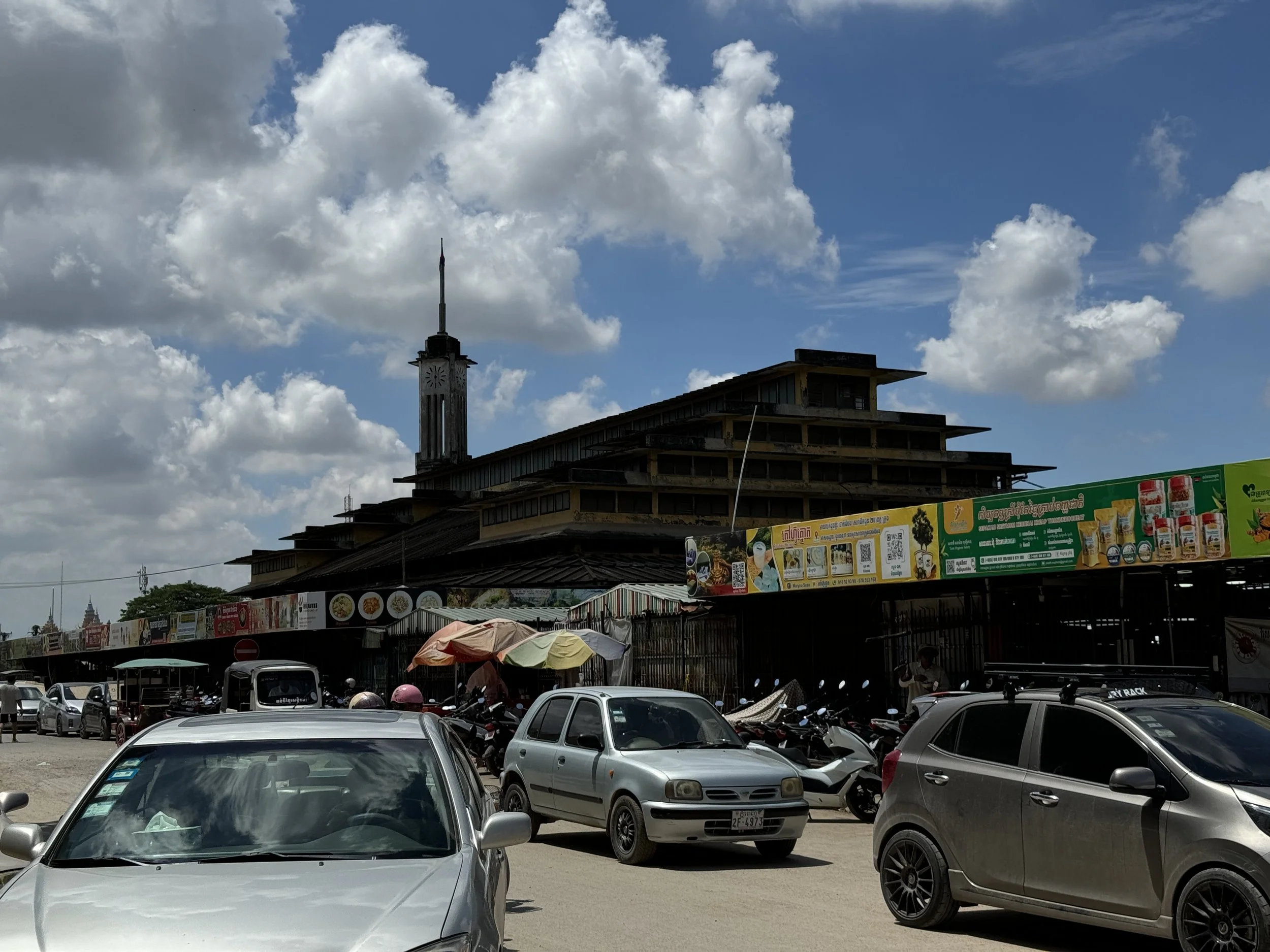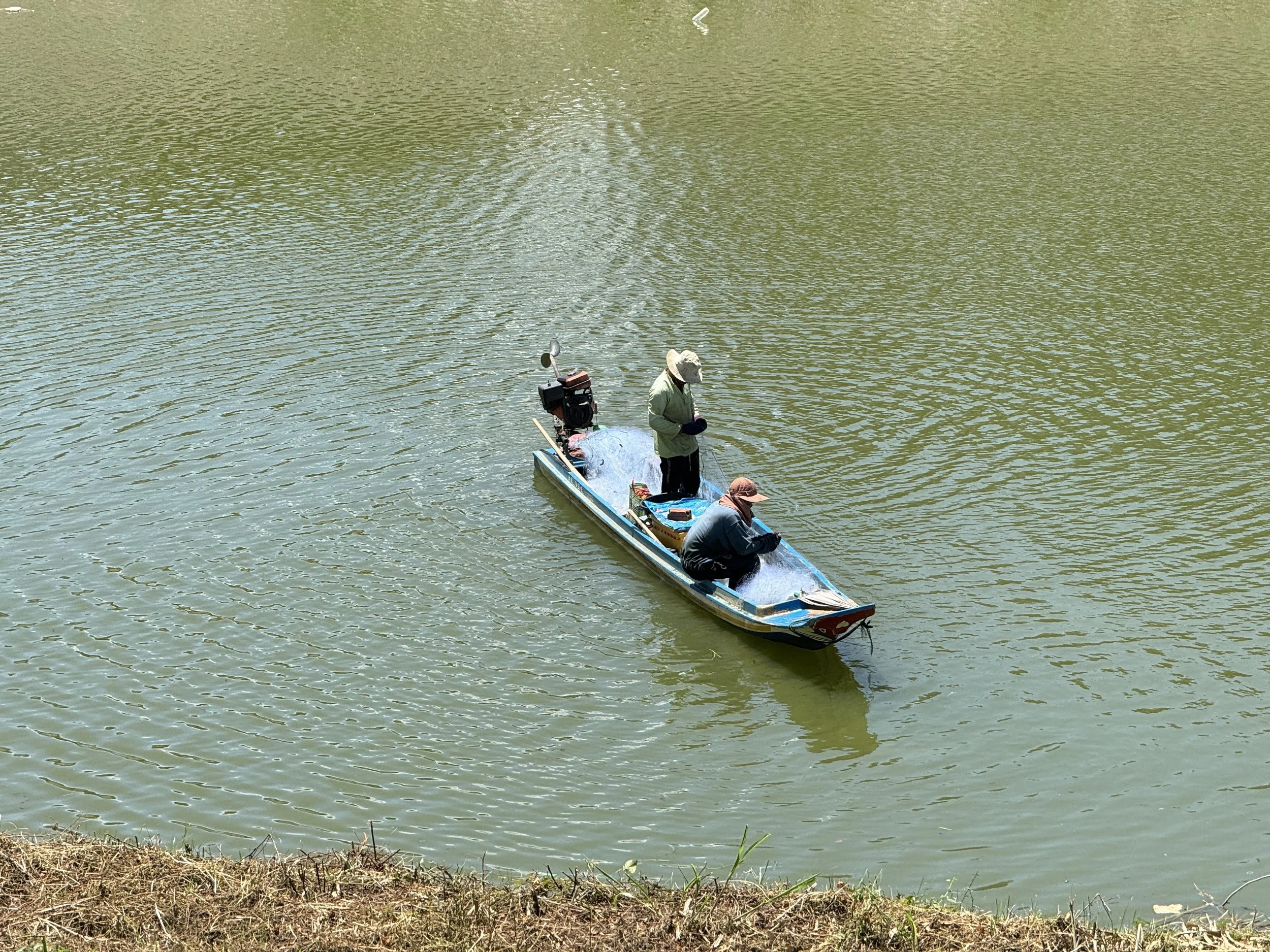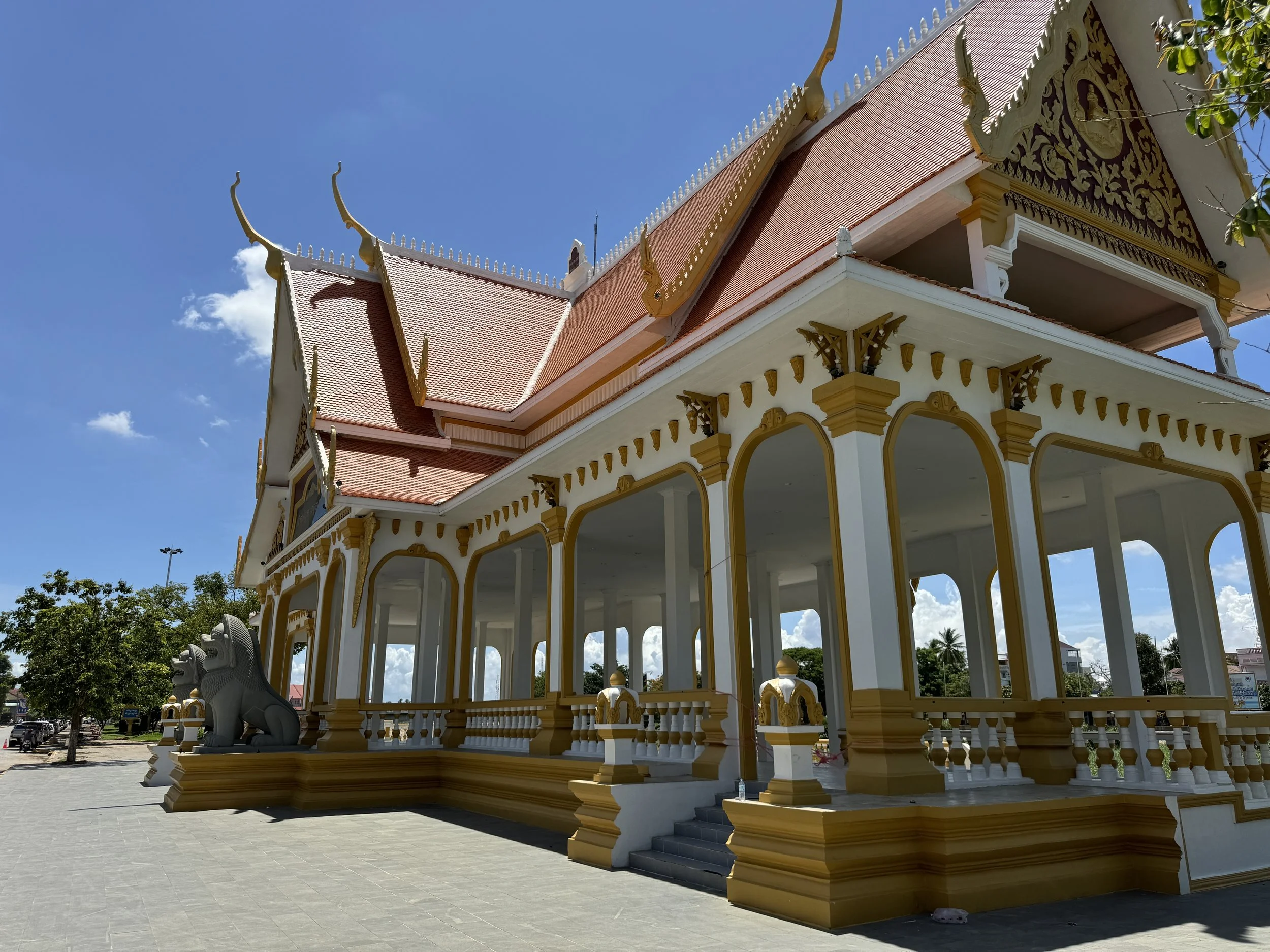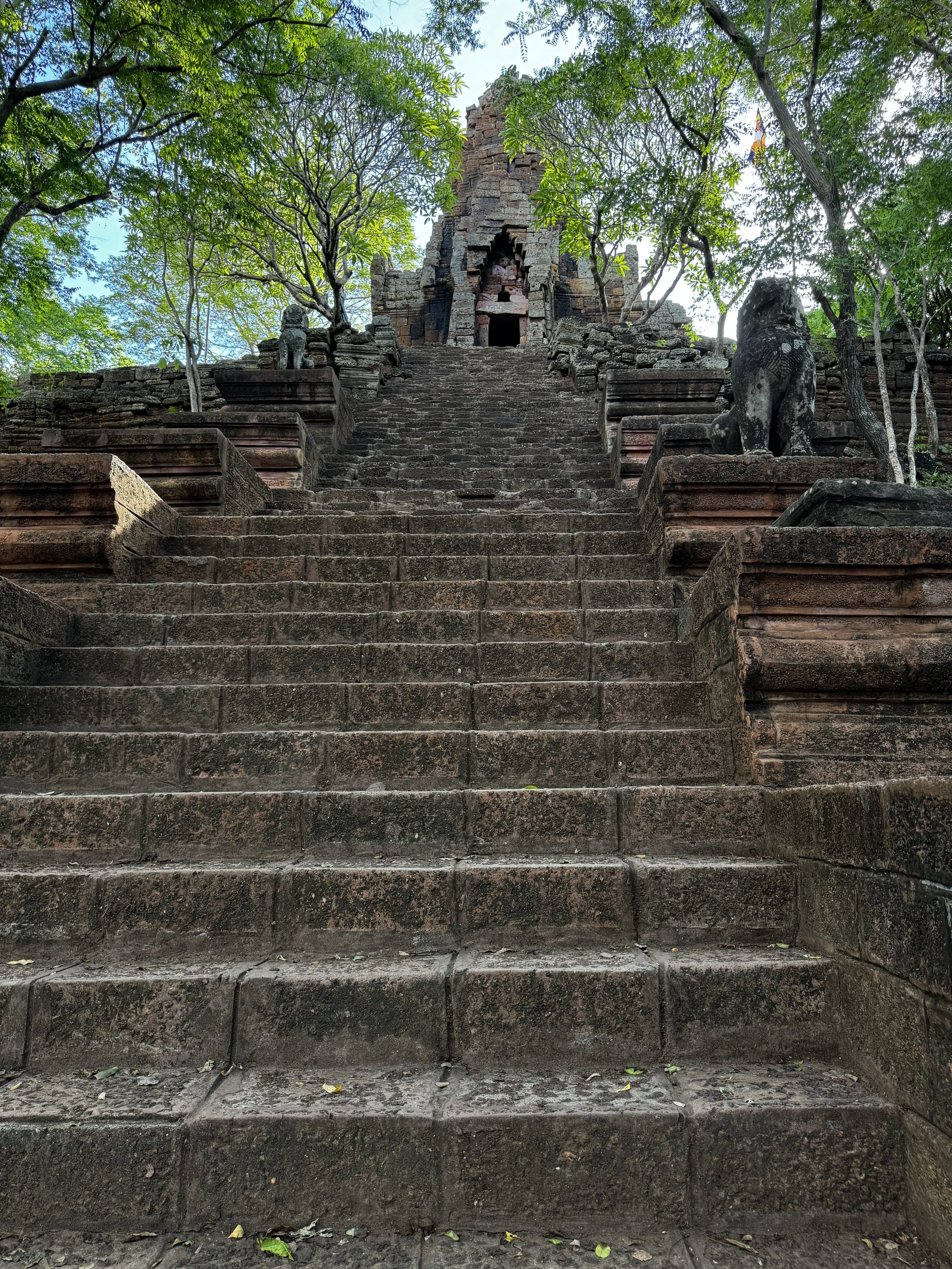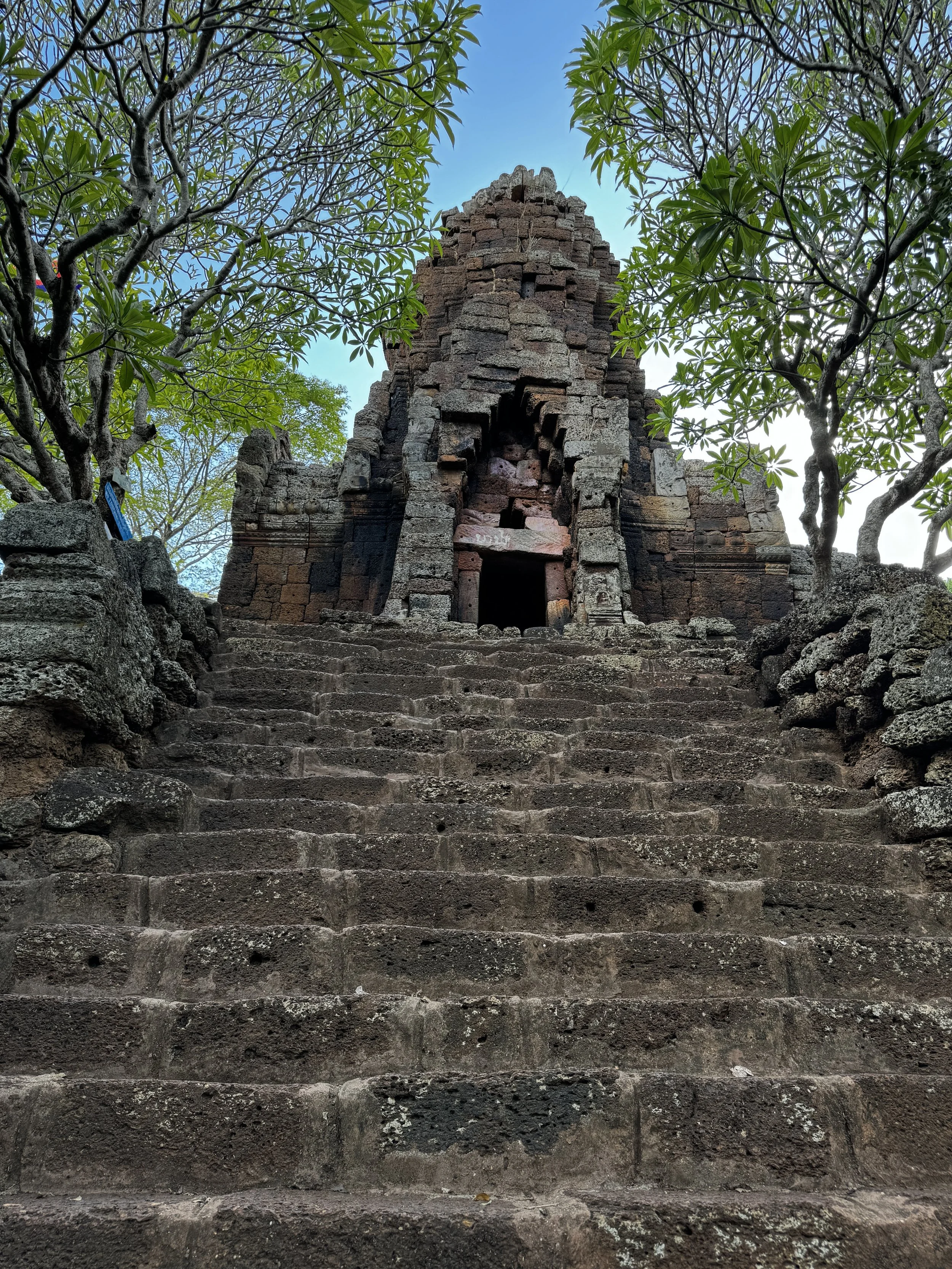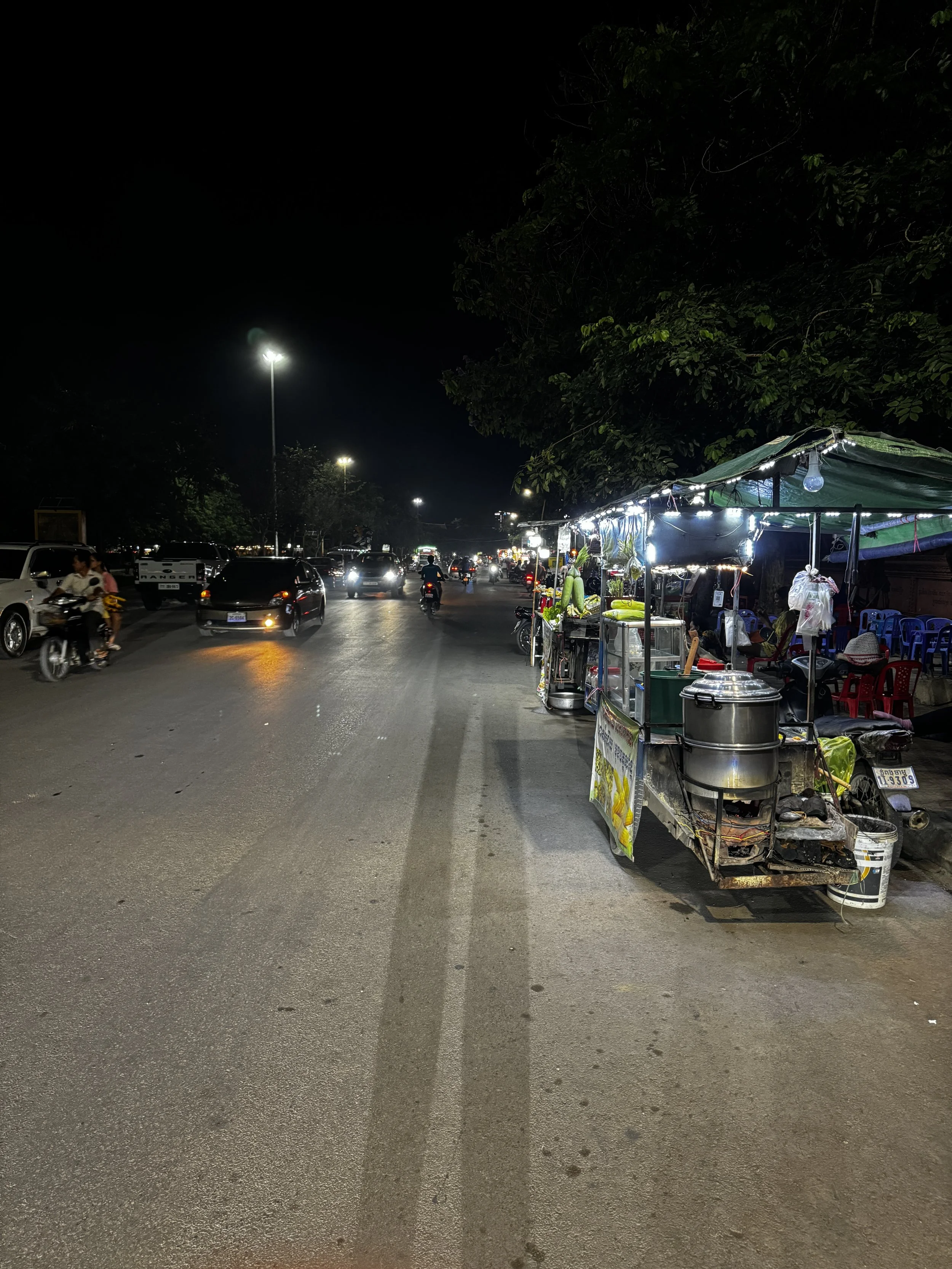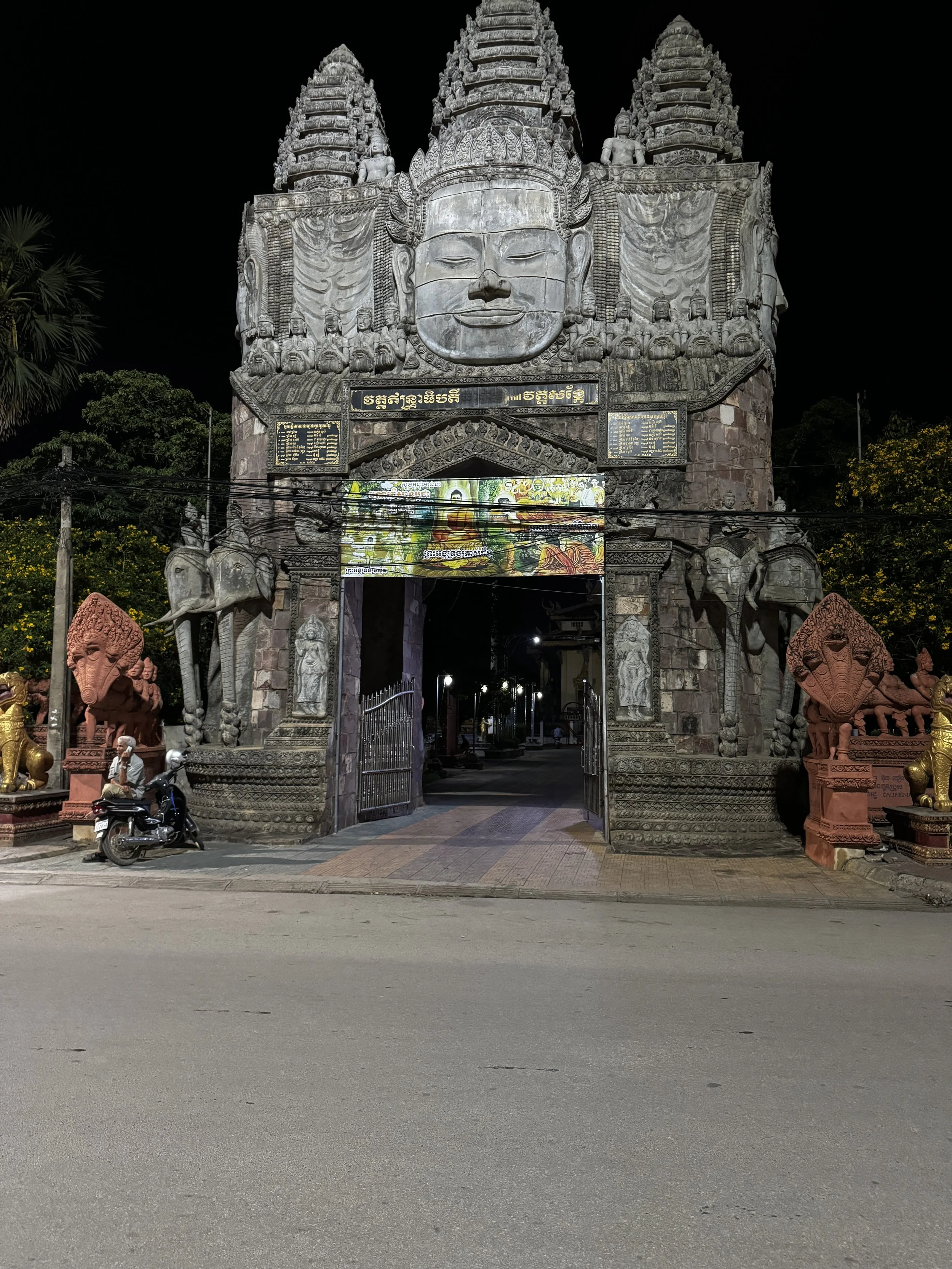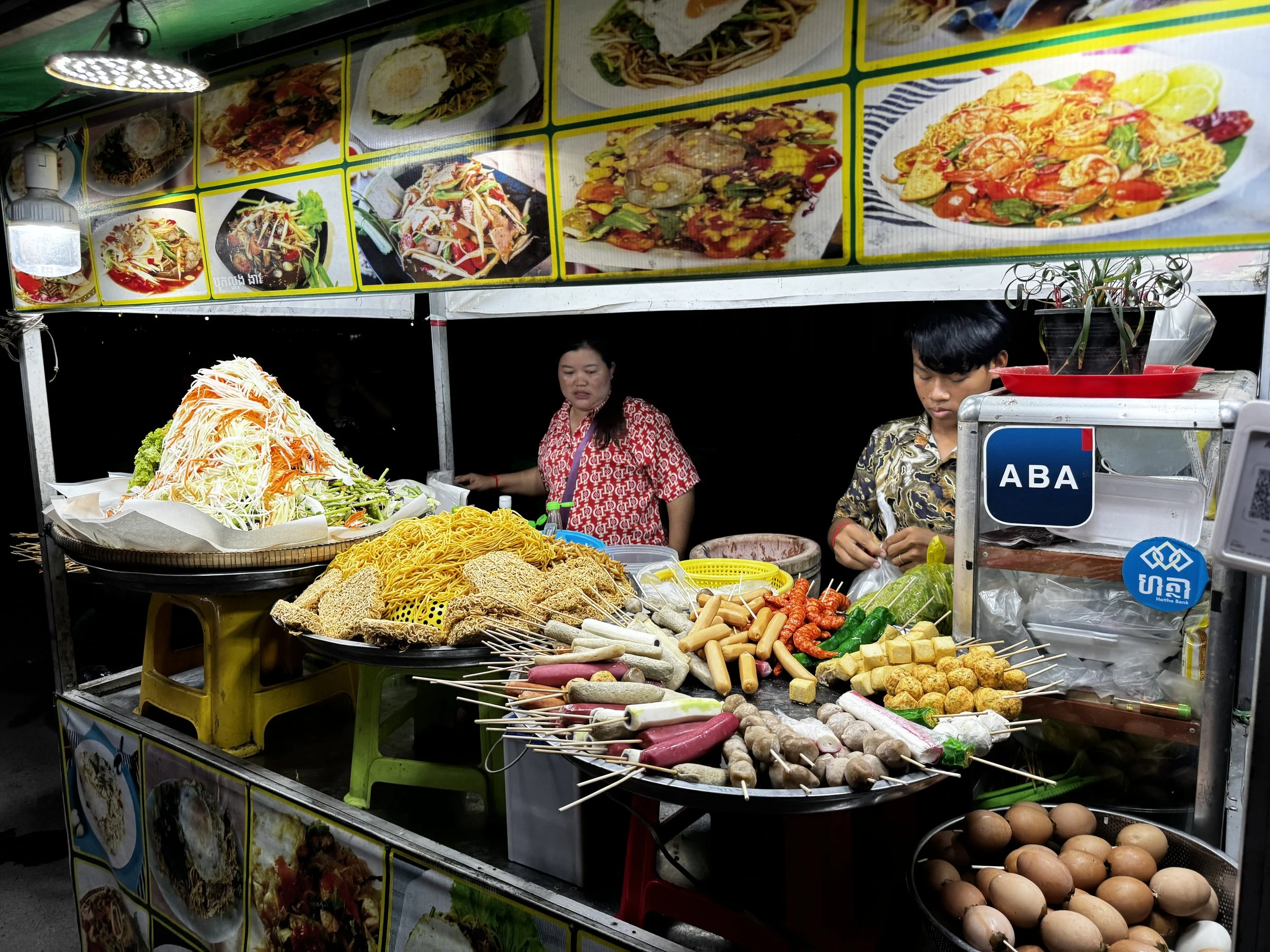July 3
I liked Battambang. It was meant as a way stop on my trip from Phnom Penh to Siem Reap, but it has a charm all its own. It is much smaller than Phnom Pen, and even though there are a few hotels that reach five or six stories, there are no skyscrapers as opposed to the way Phnom Penh seems to be sprouting them by the dozens.
Although it’s the second largest city in Cambodia, it is a distant second. It’s agricultural, and on the way to Battambang you see a lot of farms along the highway. The highway is also dotted with little towns that serve as the local community hub for the farms for several miles around. It reminds me of the way rural farmland in the midwest used to be, and probably in some places still is.
Battambang is still developing its presentable side. It doesn’t have the glitzy money that Phnom Penh likes to show off, but in it’s own way it has a nice riverfront walk that’s alive with activity at night and an independence monument of its own.
It still has numerous dirt roads going down the center of town, but I saw lots of work crews paving and adding new water and sewer mains throughout town.
What Battambang does have is history. There’s a temple complex that you climb to up an impossibly steep stairway that is older than Angkor Wat. There’s the memorialized killing caves where the Khmer Rouge tossed their victims of torture and execution.
The monkeys at Wat Phnom Sampov, one of two temples I visited, are quite cheeky. One of them was smoking a cigarette and others were trying to steal bags, shoes, or whatever they could from the visitors. The overall effect is pretty strange as the serenity of the temple is pierced by the shrieks and hissing of kleptomaniac monkeys.
The temple is on top of a large hill that contains a network of caves. The caves have significance for two reasons: the first is that they were used by the Khmer Rouge as a killing spot, and the second is that millions of bats live in the caves. Lots of them fly from a cave next to a huge carving of the life of Buddha. By lots, the estimate is 5-10 Million. Each day around 6:30PM they take off on their nightly hunt for insects and then each morning around 4AM they return. Lots of people gather at the base of the cave to watch them depart. Apparently no one goes to see them return.
There’s another Temple south of Battambang called Wat Banan. It was created because the hill that it sits on was thought to have healing powers. In the 11th century, prior to the building of Angkor Wat, local villagers would bring the sick to the bottom of the hill to pray for their health, and it worked. So the hill became sacred and a temple built on top.
The only way to the top of the hill and to the temple is via a staircase that’s extremely steep. It’s not for the acrophobic, but once you’re up there, the temple ruins are amazing.
The day-to-day life in Battambang was slower paced than in Phnom Penh. The markets seemed a little more laid back and people seemed to be chatting more rather than strictly conducting transactions. There’s very active night festivities along the river with lots of street food stalls and public Zumba dances in the parks.
I also had one of the oddest exchanges with one of the local residents. He is probably about 80 years old, straddling his scooter, and he asks me if I need a Moto, which is the typical way that people ask if they can taxi you somewhere on the back of a scooter. I said no, so he then asked if I needed a (phonetically spelled here) “laddie.”
I made the mistake of asking “What’s a laddie?” and he replied, “You know, a lady for boom-boom.”
Many different thoughts went through my mind about what to reply, from “Why, is your wife available?” to “I don’t think the police would like me to use explosives on a lady” but in the end I just said “No.”

